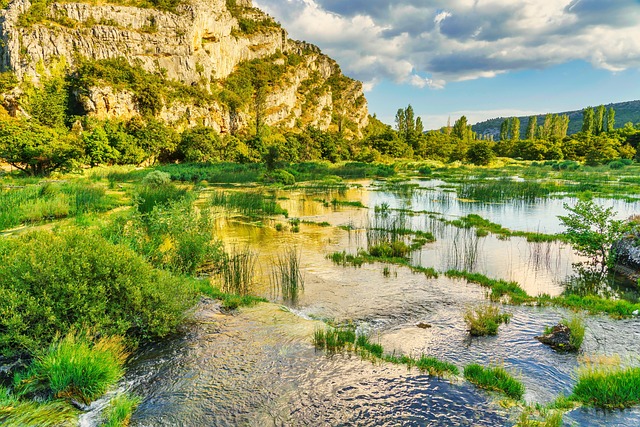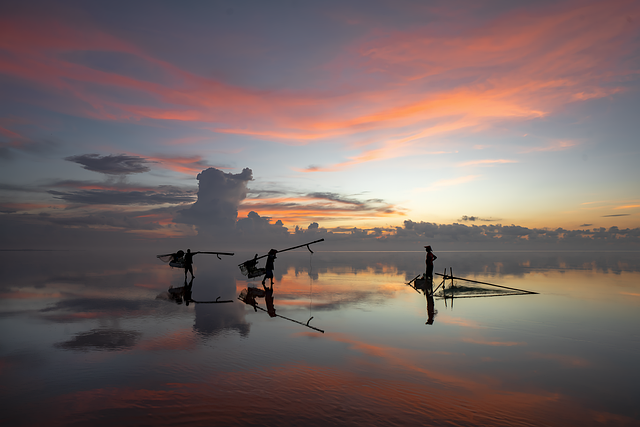Catch and release fly fishing is a conservation-focused practice where anglers responsibly handle and release fish, preserving aquatic ecosystems and fish populations in fly fishing rivers. This method uses specialized equipment and techniques to minimize harm to captured fish. Anglers identify ideal catch-and-release spots considering factors like water quality, flow rates, cover, and ecosystem health. Adhering to best practices, including using lightweight gear, proper handling, and swift releases, is crucial for maintaining the biodiversity and sustainability of fly fishing rivers.
“Explore the world of catch and release fishing, a conservation practice that empowers anglers to appreciate and protect our precious fly fishing rivers. This comprehensive guide delves into the art of selective catching, highlighting ideal areas for responsible release. From understanding ecological benefits to mastering best practices, discover why this method is vital for maintaining healthy river ecosystems. Enhance your fly fishing experience while ensuring these vibrant waterways thrive for future generations.”
- Understanding Catch and Release Fishing: A Conservation Practice
- Fly Fishing Rivers: The Art of Selective Catch and Release
- Identifying Ideal Catch and Release Areas: Factors to Consider
- Best Practices for Responsible Catch and Release in Fly Fishing Rivers
Understanding Catch and Release Fishing: A Conservation Practice

Catch and release fishing is a conservation practice that encourages anglers to carefully handle and release fish, rather than keeping them. This method has become increasingly popular, especially among enthusiasts of fly fishing rivers, as it promotes the preservation and sustainability of aquatic ecosystems. By releasing captured fish back into their natural habitats, anglers contribute to maintaining healthy populations and preserving the diversity of species.
This practice involves using specialized equipment and techniques designed to minimize stress on the fish. Fly fishing rivers, known for their delicate ecosystem, benefit significantly from catch and release methods. Anglers are trained to quickly and efficiently remove hooks, ensuring the fish’s well-being, before returning them to the water. This approach allows anglers to enjoy the thrill of the catch while also playing a vital role in conserving the rich biodiversity found in these aquatic environments.
Fly Fishing Rivers: The Art of Selective Catch and Release

Fly fishing rivers represent a unique and artistic approach within the broader realm of catch-and-release fishing. This method involves a precise and delicate technique, allowing anglers to selectively target specific fish while minimizing stress on the environment. The art lies in presenting the fly, crafted with meticulous detail, to mimic natural prey, enticing discerning fish to take the bait without causing harm.
Anglers adept in this discipline navigate rivers with a keen understanding of current patterns, water depths, and the behavior of resident fish. They carefully choose their flies based on these factors, creating a symphony of motion and color that dances across the river’s surface. This selective approach ensures the preservation of healthy fish populations, fostering a sustainable practice that allows future generations to appreciate the beauty of fly fishing rivers.
Identifying Ideal Catch and Release Areas: Factors to Consider

When identifying ideal catch and release areas for fly fishing rivers, several key factors come into play. Firstly, water clarity is paramount; pristine conditions ensure fish remain unharmed by angling practices. Secondly, the river’s flow rate should be moderate, avoiding rapid currents that can stress or even dislodge caught fish. The presence of cover, such as submerged vegetation, rocks, or logs, provides shelter for fish and increases the likelihood of successful catch and release.
Additionally, the health of the local ecosystem is a critical consideration. Healthy riverbanks, ample space for fish to maneuver upon release, and minimal pollution or habitat disruption are essential. Fly fishing rivers known for their robust populations of native species often make excellent catch and release spots due to these favorable conditions.
Best Practices for Responsible Catch and Release in Fly Fishing Rivers

When engaging in catch and release fly fishing in rivers, it’s crucial to adopt best practices that preserve the health and biodiversity of these waterways. Start by selecting the right gear; use lightweight lines and hooks to minimize damage to fish. This approach reduces stress on the fish, ensuring they can be safely returned to the water unharmed.
Additionally, handle fish with care. Wet your hands before handling them to reduce slime absorption, and use a net designed for catch and release to avoid injury. Release fish quickly and gently, supporting their bodies with your non-dominant hand and pointing the fish away from current when setting it free. Remember, responsible catch and release practices are key to preserving fly fishing rivers as a sustainable resource for future generations.






